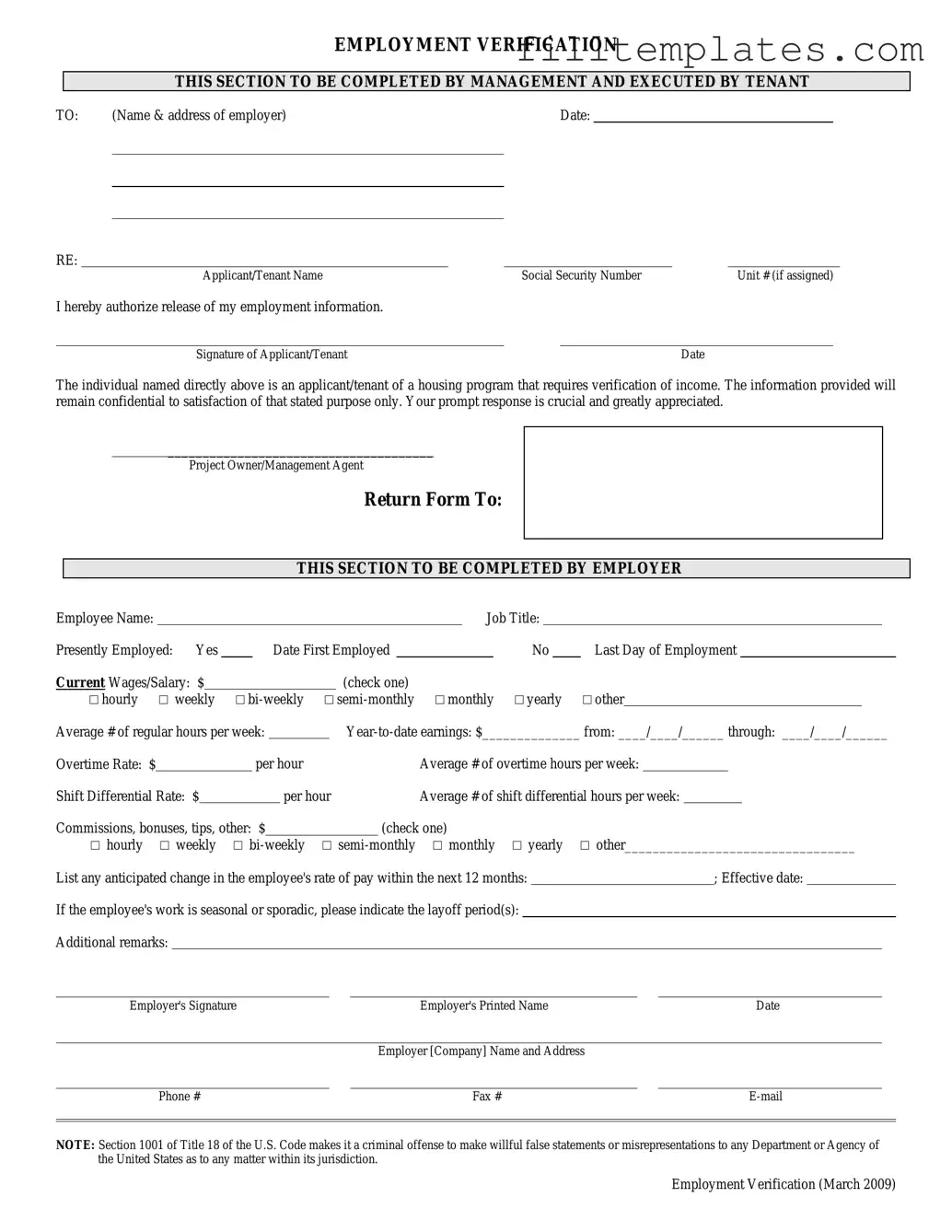Download Employment verification form Template
The Employment Verification Form is a document used by employers to confirm an individual's employment status, job title, and duration of employment. This form plays a crucial role in various processes, including background checks and loan applications, ensuring that potential employers or lenders have accurate information about a candidate's work history. Understanding its purpose and proper usage can help both employees and employers navigate the verification process more effectively.
Open Employment verification form Editor

